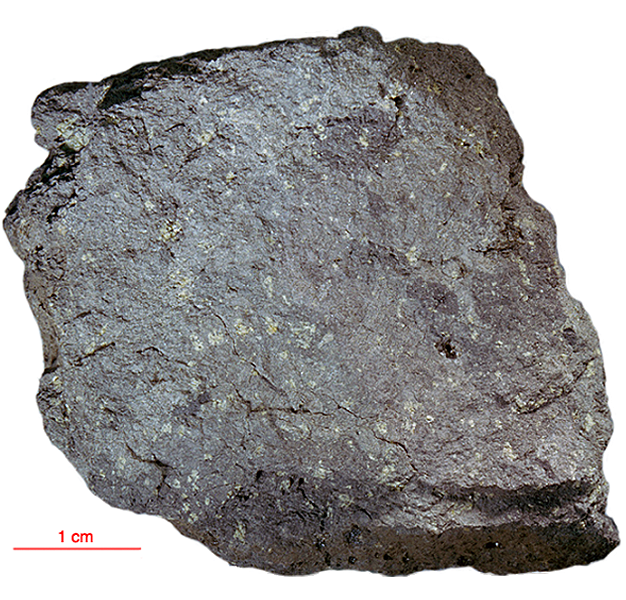
Fact sheet
15256 is a rare type of lunar breccia, made up of mostly mare basalt fragments, that are welded together. It is made up of fragments of olivine-normative basalt and lacks fragments of pyroxene basalt (the other main variety of Apollo 15 basalt). The sample lacks a signature of meteoritic siderophiles and was not a soil. 15256 is a texturally heterogeneous, shock-altered rock. Some clasts posses a well-developed vitrophyric texture containing phenocrysts or microlites of olivine (Fo65-50) and less commonly of pyroxene. Dark areas of devitrified glass (rotation 1) may be impact related. Accessories include ilmenite, metallic iron and troilite.
The sample weighed 201 grams before analysis. It has not been dated.
Further details of this and other Apollo samples are here: http://curator.jsc.nasa.gov/lunar/
The Apollo 15 landing site was in the Apennine Highlands, and close to Hadley Rille — a long, narrow winding valley. Approximately 76 kg of lunar material, including soil, rock, core-tube and deep-core samples, were returned to Earth.
This mission was the first flight of the Lunar Roving Vehicle which allowed the astronauts to venture further from the Lunar Module than in previous missions. During three periods of extravehicular activity, or EVA, on July 31st, and August 1st and 2nd, Scott and Irwin completed a record 18 hours, 37 minutes of exploration, travelling 17.5 miles, in the first car that humans had ever driven on the Moon.
Apollo 15 was launched on 26 July 1971.






